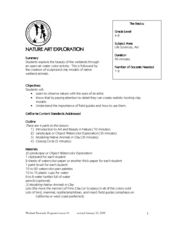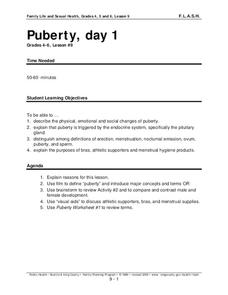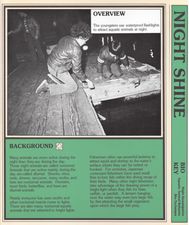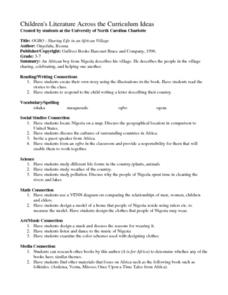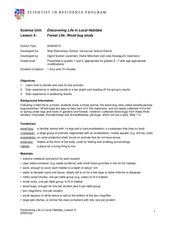Science Matters
Formative Assessment #2
Learners work collaboratively to predict what life would be like as an Arctic Hare. Teams go on a hunt where scholars role play an owl, white hares, and gray hares. Independently, pupils record their findings and reflect on their...
Curated OER
Ants
Ants are a common example to use when conducting lessons on insects, and if your youngsters are squeamish, this is a way to introduce them without actually bringing them into the classroom! Viewers of this PowerPoint learn about the...
Scholastic
Study Jams! The Universe
Take your kids on a trip through the universe as they explore galaxies, solar systems, stars, and more. Watch the short video, then have learners show their knowledge with the included quiz. Supplement the video by having teams build a...
Curated OER
Conservation in Small Spaces: Butterfly Life cycles
Students discuss ways that butterflies and moths change during their lifecycles, observe caterpillars, and explore how their different body parts work.
National Wildlife Federation
Life in the Cold: Climate Challenges
What does it take to make it in the Arctic? Learners examine the cold weather adaptations of a polar bear that help it survive. With everyday objects, they model these characteristics as they become make-shift polar bears. Modeling helps...
Curated OER
Pond 1: Pond Life
Young scholars investigate familiar and unfamiliar ecosystems using Internet resources. They explore how various organisms satisfy their needs within their environments and study the kinds of relationships that exist between organisms...
Curated OER
Life Science - Seeds
Fourth graders participate in a scientific experiment involving growing lima beans. Students plot information gathered on included charts and graphs. Students use the steps of the scientific method throughout this experiment.
Curated OER
Nature Art Exploration
Students draw a nature landscape using watercolors. In this life science lesson, students share their personal experience on the beauty of nature. They create clay models of different native animals.
Curated OER
Life Science- Useful Waste
Fourth graders explore the topic of waste and recycling. In this useful waste instructional activity, 4th graders classify objects and sort them into most usable and least usable categories. Students complete an activity sheet and have a...
Curated OER
Ladybug Life Cycle
In these life cycle worksheets, students color the ladybug life cycle pictures and then cut them out. Students then glue them to the life cycle chart to show the correct order of a ladybug's life cycle. Students write the name of each...
Curated OER
Seaside Science
Students classify sea life and shells and develop computer-generated tables and graphs. They observe a desalinization demonstration and enter information on their laptops through each step of the scientific experimental process.
Curated OER
Life Cycle of a Bluebird
In this life cycle worksheet, students number the stages of a life cycle of a bluebird. Students label 12 different stages of this life cycle.
Curated OER
Butterfly Life Cycle...
In this butterfly worksheet, learners study a picture of a butterfly and label the picture with the different stages of the life cycle of a butterfly.
Curated OER
Who Am I? - Sea Creatures Picture and Word Match
In this matching worksheet, students match 16 pictures of sea creatures with their names which are located in a word bank at the bottom of the page. They see pictures of a hermit crab, a jellyfish, a clam, and a starfish.
Curated OER
Salmon Life Cycle Word Search
In this salmon life cycle word puzzle worksheet, students examine the 20 words and names in the word bank and locate them in the word search puzzle.
Curated OER
Lettuce Us Be Different
Students evaluate their differences, then look at differences in plants. In this class team building and life science lesson, the class play a game that focuses on similarities and differences in the group, then students plant three...
Curated OER
Puberty
Students investigate life science by answering maturity questions. In this human health lesson, students identify the changes which occur during puberty and answer study questions based on sexual awareness. Students define scientific...
Curated OER
Life Science: DNA Whodunit?
Students role play an honorary detective to assist in solving a crime committed. They investigate by a bank robbery and interview eyewitnesses using their Crime Investigation Notebook and clues from an eyewitness account from the...
Curated OER
Life Science: Exploring Our Human Bodies
Students explore the concept of the human body. They complete a variety of activities concerning the function of various organs. They listen to their heartbeat with a stethoscope, examine how muscles work during a game of tag, and play...
Curated OER
Night Shine
Students explore aquatic animals that are attracted to light. In this science lesson, students observe how aquatic animals respond to light at night. Students search for aquatic animals in the dark and attempt to catch them. Students...
Curated OER
Children's Literature Across the Curriculum Ideas-OGBO : Sharing Life in an African Village
Students read OGBO: Sharing Life in an African Village by Ifcoma Onyefulu. They complete a variety of cross-curricular activities surrounding the study of Nigerian culture. Included are reading, art, math, science, writing, social...
Australian Geological Survey
Nautiloid Model
At a glance, this cut-out paper model of a nautiloid looks promising. Know, however, that it requires manual dexterity for cutting out neatly and for folding and attaching the tabs. This particular mollusk model is quite difficult to...
Curated OER
Introduction of Life Cycles
Fourth graders explore life cycles and the metamorphic process. In this life science lesson, 4th graders work in groups to study a group of creatures and metamorphosis. Students view examples of metamorphic and non-metamorphic life...
Curated OER
Forest Life- Wood Bug Study
Examine wood bugs and their habitat. Learners gather wood bugs and examine their bodies. Then discuss their body parts and how they help them survive. They also predict where they think wood bugs live to then graph the class results.









